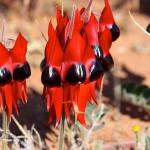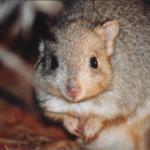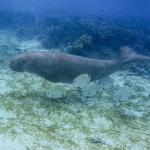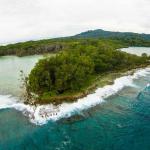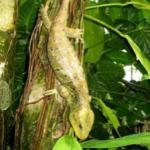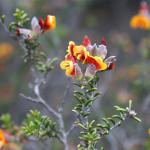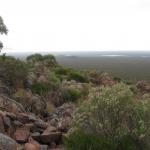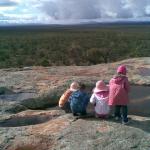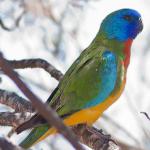Arid Recovery
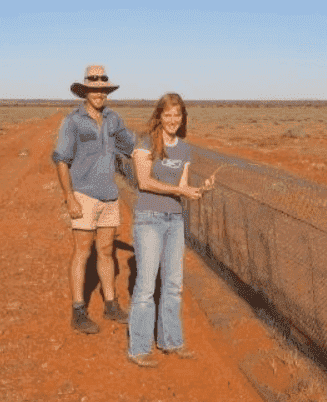
Arid Recovery is a landscape scale restoration project situated 20km north of Roxby Downs in arid South Australia. Katherine Moseby and John Read were co-founders of Arid Recovery, along with David Paton (The University of Adelaide) and Peter Copley (SA DEWNR). Katherine was the inaugural manager of the program and they were both intimately involved with the development and management of this nationally significant conservation and restoration project from its inception in 1997 till they left Roxby Downs in 2009.
Arid Recovery has successfully reintroduced five locally-extinct threatened mammals to a 12,300 ha landscape-scale cat, fox and rabbit-proof reserve in northern South Australia. Arid Recovery also aims to demonstrate that mining, pastoral and conservation organisations could (and should) work together for mutual benefits. John and Katherine retain an active involvement with Arid Recovery through assistance with long term monitoring (including 25 years of pitfall trapping data and 20 years of cage trapping data) and research and membership of the Scientific Advisory Committee.
To find out more about this exciting project please visit www.aridrecovery.org.au
Tetepare

At 118 square kilometres, Tetepare Island is the largest uninhabited island in the South Pacific. Tetepare supports pristine lowland rainforest and a rich inshore marine area. The island was originally inhabited by headhunters who fled the island in the mid-19th century and settled on neighbouring islands. The island supports populations of threatened leatherback turtles, the endemic white eye, the world's largest skink, dugongs, a rich marine life and the endangered coconut crab. The island was under threat from logging in the early 1990's when John Read and Katherine Moseby visited the Solomons Islands on their honeymoon. After visiting the island they became enchanted by its pristine rainforests and coral reefs and decided to help local villagers preserve the island. Threats from international logging companies loomed but with assistance from Katherine and John and international aid agencies, landholders formed the Tetepare Descendants Association. The organisation initiated a conservation management program which was managed by John and Katherine for the first 3 years before being handed over to local staff. Now home to the one of the Solomon Islands' leading conservation projects and a unique, locally-owned and managed ecolodge, Tetepare's natural abundance attracts visitors from around the world. John and Katherine are patrons of the Tetepare Descendants Association and visit annually to assist with research and monitoring programs and provide management advice to local staff.
The island has been recognized for its conservation significance and archaeological values. A total of 73 bird species, 24 reptile, four frog and 13 mammal species have been recorded on Tetepare including rare and endemic bird and bat species.
The recently launched book The Last Wild Island : Saving Tetepare is an insite to this facinating island and its custodians.
Further information about Tetepare.
Tetepare needs your help!
For the latest updates from Tetepare and how to visit the ecolodge or research station
www.tetepare.org
Middleback Alliance

Ecological Horizons are part of the Middleback Alliance, a partnership between the South Australian Department for Environment, Water and Heritage, SIMEC Mining, Ecological Horizons and other local landholders. The Alliance aims to sustainably manage both private and public land in the region of the Middleback Ranges on the Eyre Peninsula, South Australia. Within the Middleback Alliance area, Ecological Horizons owns the Secret Rocks Nature Reserve, a 25, 900 Ha area of mallee scrub which has been placed under a conservation covenant. On ground actions which are initiated by the Alliance include goat, rabbit and fox control, fire and threatened species management and engagement of regional land managers and volunteers.
Key programs include annual Malleefowl nest monitoring of up to 300 mounds and pitfall trap monitoring for threatened species including the sandhill dunnart. We operate a remote camera monitoring program for goats and foxes and use aerial baiting in partnership with the Department of Environment, Water and Heritage’s Bounceback program to control foxes. We also trial Felixers, traps and Eradicat cat baits as a means of controlling feral cats.
Ecological Horizons have successfully reintroduced the nationally Endangered Chalky Wattle , and Shark Bay barred bandicoots to an initial 900ha herbivore and invasive predator-proof Mallee Refuge exclosure. In late 2021 we completed an 18km expansion to this fence to enclose a total of 4,000 Hectares, which will enable reintroduction of numbats, red-tailed phascogales and plains mice supported by an Australian Government funded Safehaven grant. Ecologist Cat Lynch assists Ecological Horizons with Middleback Alliance project activities.
Self-guided walks along trails where threatened plant species have been reintroduced start at the carpark on Middleback Road and follow the base of Secret Rocks. Download a PDF of the map of the trails here.
Felixer Grooming Traps
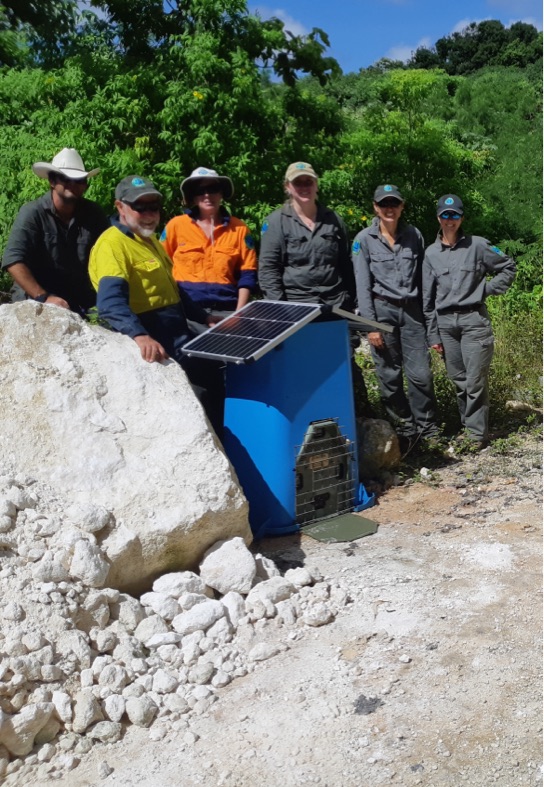
Feral cats continue to be the major cause of extinction of many natural and reintroduced wildlife populations. Cats are reluctant to take baits or enter traps when live prey are abundant. Ecological Horizons developed and patented the Felixer with assistance from SA Government Innovation vouchers, SA DEWNR, The Foundation for Australia's Most Endangered Animals, Sporting Shooters Association of Australia, Ian Potter Foundation, The Government of Australia, IGO and Electranet. Felixers use an array of sensors, and now an inbuilt Artificial Intelligence camera, to detect and spray cats and foxes with toxic gel that they ingest whilst instinctively grooming, hence circumventing the problem of having to lure cats to food baits and reducing the non-target risk to native species that do not groom.
Felixers are being commercialised by Thylation, a charitable Foundation and commercial company founded by John to deliver conservation through innovation. Updates on Felixers and other Thylation initiatives, research reports, order forms etc are available at(www.thylation.com)
Kangaroo Management
In many parts of Australia, kangaroos often reach unsustainably high numbers because their main predator, the dingo, has been removed and permanent waters and favoured grasslands have been created by agriculture. Overabundant kangaroos typically end up enduring a horrible death through starvation, after first removing all palatable vegetation and threatening rare plants and other animals, including in National Parks.
Ecological Horizons have been drivers and collaborators in demonstrating the animal welfare and environmental impacts of overabundant kangaroos, including editing a Special Edition of Ecological Management & Restoration on the subject, creating an information video and partnering with initiatives to respect kangaroos as an iconic animal and a valuable resource, rather than either ignore their fate or treat them as pests Kangaroo Partnership Project
Warru Recovery
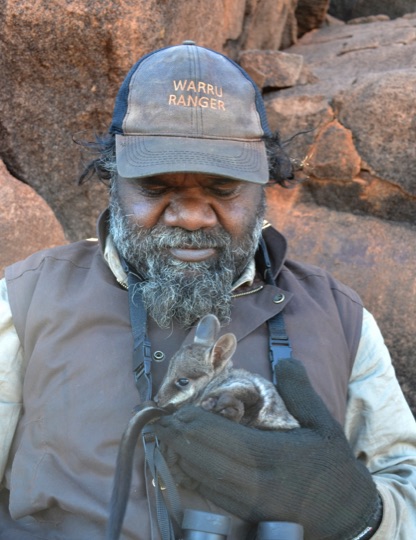
Warru (Black-footed rock wallaby) are South Australia’s most threatened mammal. Ecological Horizons have been researching and managing warru for over 25 years since the isolated Davenport Ranges population became extinct and were founding partners in the formation of the Warru Recovery Team in 2006. The Warru Recovery Team, chaired by John Read, has been one of the longest running and successful threatened mammal recovery teams, working closely with Anangu Traditional Owners and rangers and dedicated representatives from Landscapes Board, DEW, ZoosSA, Australian Museum and independent scientists. In 2016 warru were reintroduced to Wamitjara, where they declined to extinction in 2006 (link to PDF report) and in 2022 warru were reintroduced to the Everard Ranges for the first time in over 40 years.
Tracking Australia
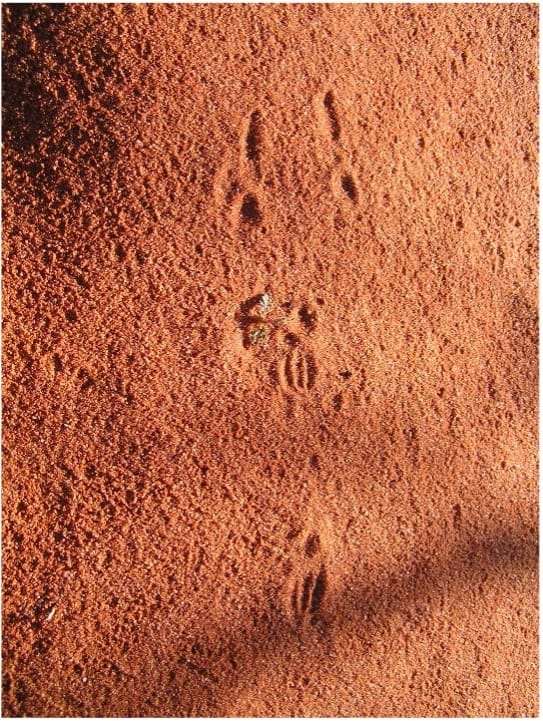
Ecological Horizons and Envisage Environmental Services initiated a track-based monitoring system for recording changes in distribution of arid zone species. A series of 2 ha plots are monitored on sandy substrate and the presence of animal tracks, burrows, scats and other sign recorded. By replicating plots over large areas and long time frames, information on changes in the distribution of nationally threatened arid zone species can be determined.
"Tales in the Sand, a guide to identifying arid zone fauna using spoor and other sign" is an identification manual written by Katherine Moseby, Theresa Nano and Rick Southgate which aims to encourage and train arid zone residents and visitors in the new technique. The method is now used nationally by more than 20 organisations including indigenous groups and government.
A National Environment Science Program project based on this method has since made substantial progress towards organising a national database for the technique. Data will be stored on a national database and anyone interested in contributing to this national database or obtaining a copy of the booklet can contact Katherine or Rick at Tracking Australia or look for information at https://www.nespthreatenedspecies.edu.au/projects/arid-zone-monitoring-surveys-for-vertebrates-across-arid-and-semi-arid-zones
Wild Deserts
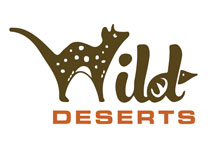
Ecological Horizons has partnered with the University of NSW to reintroduce threatened mammal species to Sturt National Park in NSW. This project is funded by the NSW Office for Environment and Heritage and will see seven species returned to NSW after decades of extinction. Ecological Horizons provides expertise in the area of reintroductions, feral animal control and fence design as well as conducting research into restoration processes. Potential honours or PHD students interested in being involved in this research can contact us or Wild Deserts for more information. To date, four species have been reintroduced, namely the brushtail mulgara, bilby, shark bay bandicoot and golden bandicoot. All reintroductions are going well so far with breeding occurring and populations increasing. Reintroductions first occur into two x 2,000 ha fenced exclosures with animals then dispersing into a larger 10,000 ha Wild Training Zone area where feral cats and foxes are kept at low levels to help facilitate co-existence. This project builds on Felixer studies and the prey naivety project at Arid Recovery.
Publishing and blogs

Read reviews or order John's books and read and comment on his provocative blogs at www.johnlread.com
